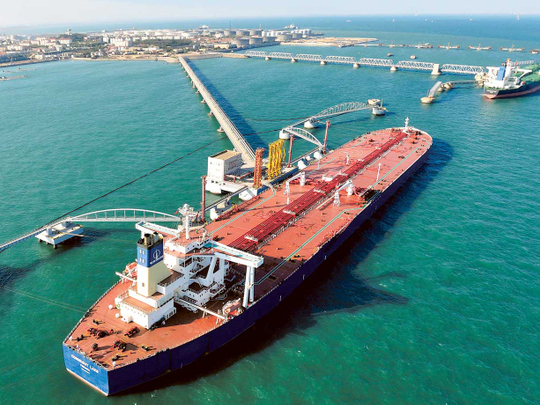
Dubai: Demand for oil continues to drop as more countries enforce stay-at-home policies, planes get grounded, and major industries shut down amidst a global campaign to contain the coronavirus outbreak. And as the ongoing price war between major oil producers continues, the price is expected to plunge to all-time lows... and even below production costs.
Brent prices are now at its lowest for 17 years. It closed Friday at $27.21 per barrel, while West Texas Intermediate crude (WTI) closed at $23. Goldman Sachs analysts said in a note sent to clients that Brent, the international benchmark, “could dip as low as $20 per barrel and test operational stress levels”.
“This is what the world of oil is facing as demand temporarily collapses and prices fall near lows not seen since the late 1990s,” said Jim Burkhard, Vice-President and Head of IHS Markit’s Crude Oil and Energy and Mobility Research told “Gulf News”. “This is an emergency situation for the oil industry given the extreme speed at which it is unfolding.”
Plunge to the bottom
Over the weekend, Bank of America told clients the US was heading towards a recession because of the spread of the coronavirus. In addition, oil producing countries continue to increase production at record levels amidst a price war between Russia and Saudi Arabia after Opec+ (Opec and Russia) failed to reach an agreement earlier this month over how much further to cut production to offset the virus outbreak-induced decline in demand. Some oil producers recently reduced selling prices by up to 20 per cent.
Global oil demand is at around 100 million barrels per day. However, as consumption continues to collapse due to the economic impact of the virus and containment measures, demand, Burkhard says, could go further down by up to 20 per cent.
“Oil supply will exceed demand in the first-half of 2020 by approximately 1.7 billion barrels, which is 500 million barrels more than the upper end of the range of crude oil storage capacity that we estimate is available,” he added.
This translates into approximately 20 million barrel per day surplus of oil in the market - and well above the world’s storage capacity.
Building up to a glut
“In the absence of any further surprises,” oil will slip further, says Andreas de Vries, a GCC-based strategy consultant in the energy industry. He cites two reasons: “First, this is because as far as coronavirus mitigation is concerned, it is still early days for most European countries, like Germany, the UK and France, as well as for the US and Canada.
“It is likely they will introduce more stringent measures to combat the spread of the virus over time. This means that the global economy will slow down further.
“Second, current oil supply levels are already above global demand. These additional barrels are going into storage. As storage gets filled closer to capacity, this will further depress the oil price.”
Best case scenario
So where are we heading? Analysts talk of two scenarios. The best-case scenario, de Vries says, would see effective containment measures against the pandemic and successful stimulus packages that could stem the secondary and tertiary effects on the economy. Also, this would require a resolution to end the oil price war.
But even this scenario does not mean oil will return to $60 plus levels. A $40 plus level “would be a reasonable expectation,” he says.
Even in the best-case scenario, he adds, the 2020 average crude price will be substantially below what most producers need to balance their budgets. “Since many of them, in the Gulf at least, are also implementing coronavirus containment measures, [which means that] many sectors of the economy will need some stimulus this year to stay afloat - tourism and hospitality in particular.
“Many of the producing nations will therefore be faced with a substantially lower income at a time their economies need additional expenditure. There are reserves, so for some time this can be managed by most. But clearly not forever.”
On the other hand, the worst-case scenario assumes that the global economy will be impacted by a wave of bankruptcies.
“Yes, many countries have announced fiscal stimulus but the big questions remain: Can they get it to those who need it, and can they get it to them in time?,” de Vries says.
If that does not happen, then the world is onto a prolonged downturn that could be worse than the 2008 financial crisis. Oil might well end the year around $25.
BOX
“The dispute is essentially about US shale and its role in managing supply. Russia want US shale to cut production before it cuts its own supply, and Saudi Arabia wanted an agreement on production cut even without a US shale cut,” said Andreas de Vries, a GCC- based strategy consultant for the energy industry.
If over coming weeks, US shale producers start to reduce output, which is possible considering the current oil price, “then Moscow and Riyadh can say their strategy has worked and claim victory. This could bring them closer together again and make them agree on a further OPEC+ reduction. This is a real potential upside in the outlook for oil in 2020.”








